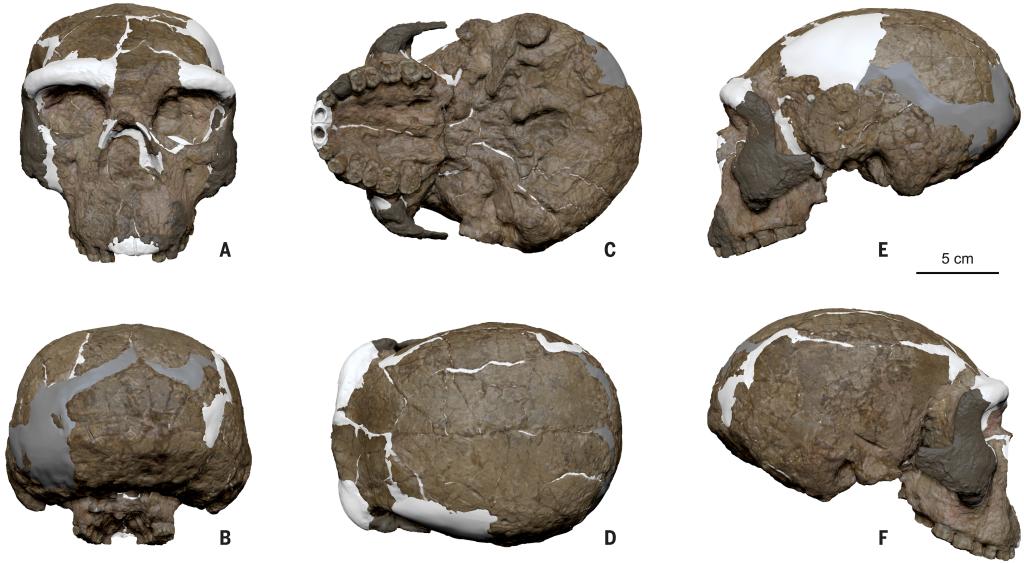
This picture, provided by the Institute of Vertebrate Paleontology and Paleoanthropology of the Chinese Academy of Sciences, shows six images of the reconstructed "Yunxian 2" human skull fossil. [Photo/Xinhua]
A new study of a 1-million-year-old human skull found in central China revealed a previously unknown branch of the human family tree, dramatically pushing back the accepted timeline of human evolution.
Published in the journal Science this week, the study identified the fossil, known as "Yunxian 2," as an early member of the Homo longi (also known as "Dragon Man") clade and suggested that the split between early human lineages happened much earlier than previously thought.
Discovered in Yunxian County, Hubei Province, in 1990, the "Yunxian 2" skull was crushed during the fossilization process, making detailed analysis difficult, according to the study.
It was initially classified as Homo erectus, a more primitive species of human that walked fully upright and lived about 1.9 million to 110,000 years ago, but researchers from the Institute of Vertebrate Paleontology and Paleoanthropology of the Chinese Academy of Sciences have now reclassified the fossil after extensive digital reconstruction.
Using high-resolution CT and 3D scanning, they identified cracks, mineral fillings and intact bone fragments. After analyzing anatomical features and hundreds of geometric landmarks to measure skull shape, they virtually put the pieces back together with the help of a novel digital reconstruction method. The research team then tested the accuracy of the model with over 10,000 simulations to confirm the reliability of the results.
The rebuilt skull shows a mix of primitive and derived features. It has a low, flat forehead and a sticking-out face that looks like the older Homo erectus or Homo heidelbergensis, an early human species that lived in Africa and Europe about 700,000 to 200,000 years ago. However, it also has flatter cheekbones, a wider back of the skull and a larger brain size of over 1,100 cubic centimeters.
These features align it with fossils of Homo longi and other Middle and Late Pleistocene, roughly 125,000 to 11,700 years ago.
Taking "Yunxian 2" as a reference point, the researchers built a comprehensive Homo family tree. They concluded that the split between early human lineages occurred far earlier than the fossil record previously indicated.
The study shows that "Yunxian 2" is not Homo erectus but an early member of the Homo longi clade, which researchers suggest may include the Denisovans, an extinct group of ancient humans who lived in Asia from roughly 400,000 to 30,000 years ago.
"The findings suggest that by 1 million years ago, our ancient ancestors had already diverged into distinct groups, leading to a more complex evolutionary history than once believed," lead researcher Ni Xijun said.
In the Homo family tree, most Middle Pleistocene human fossils from Asia are grouped within the Homo longi clade and share a most recent common ancestor with modern humans.
The study has shed light on the mystery of human evolution between 1 million and 300,000 years ago, serving as a reminder that there is still so much to discover about the origins of humanity, far beyond what we currently know, Ni noted.
The research team also includes members from Chinese universities and archaeological institutes, as well as the Natural History Museum in London.


 Share:
Share: 




 京公網安備 11010802027341號
京公網安備 11010802027341號